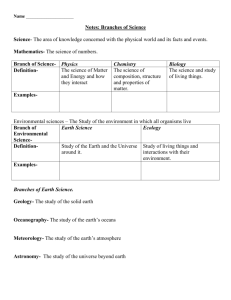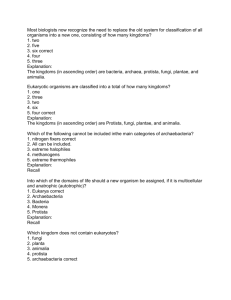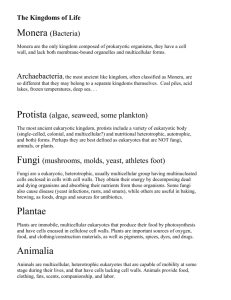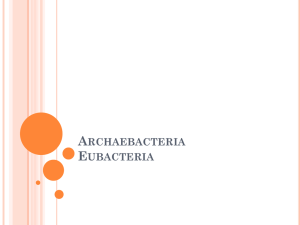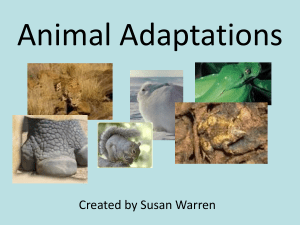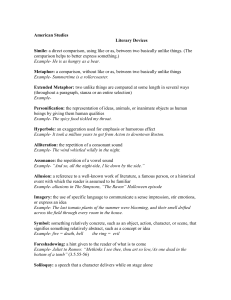Chapter 20 Notes
advertisement
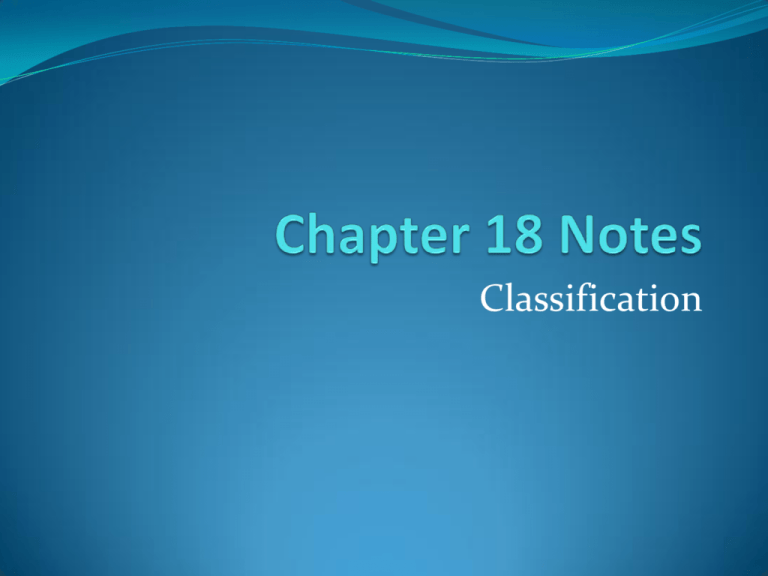
Classification How are organisms classified? Organization of Life Kingdom Phylum Class Order Family Genus • Species Kingdoms Organisms are grouped by similarities 1) Cell Type Prokaryote or Eukaryote 2) Cell Structures – Type and/or presence of cell wall 3) Number of Cells – unicellular, multicellular, tissues, organs etc 4) Mode of Nutrition Autotroph or heterotroph Kingdoms Monera (old name) Eubacteria Archaebacteria Protista Fungi Plantae Animalia Kingdom Monera Now divided into two new kingdoms Eubacteria examples normal flora, some pathogens, food culturing bacteria Archaebacteria Prokaryotes with unusual lipids in their cell membrane Types of Archaebacteria Methanogens- swamps- produce methane gas Thermophiles- live in hot water Halophiles- live in very salty environment Multicellular organisms Colonial- group of cells that permanently live together but do not coordinate activities Example Volvox Aggregates Cells that live together temporarily then separate Exampleslime mold True Multicellular Organisms Activities of cells are coordinated Cells are in contact with one another Cells specialize in different functions Differentiation- process by which cells become specialized in form and function Kingdom Protista- the protists Eukaryotes that are not fungi, plants or animals May be auto or heterotroph May be unicellular or multicellular 6 general groups Psudopods Move by pseudopodia Move by extension of cytoplasm Example- amoeba Flagellates Move by means of tail- like flagella Example- Euglena Diatoms Shell made of silica glasslike Algae (photosynthetic) Different kinds of chlorophyll Different colors Funguslike Slime molds and water molds Sporeforming Have resistant structure (spore) Can survive long periods of bad conditions Kingdom Fungi Structure is plantlike but no chlorophyll 3 types based on reproductive structure Zygomycetes Use zygospores to reproduce Example- bread mold Basidiomycetes Use mushrooms to reproduce Ascomycetes Sexual spores in sacs called asci Example: Truffles Kingdoms Plantae and Animalia Have specialized cells organized into structures Tissues- cells with common structure and function (muscle, nerve) Organs-group of tissues with specialized function (Heart, Lung) Organ system- group of organs that carry out major body functions( circulatory, digestive) Plants Photosynthetic –primary producers, release oxygen Cell walls 4 types Some plants have vascular tissues- carry water and nutrients throughout the plant Non vascular plants Without a well developed system of vascular tissues Lack true roots, stems and leaves Example- mosses Seedless vascular Have roots, stems and leaves Waxy covering Reproduce with spores Example- ferns Non Flowering seed Vascular Seeds but no flowers Example- pine Flowering seed Vascular Produce flowers and seeds Example- rose, grass, oak Animals Diverse in form Invertebrates- no backbone Vertebrates- have a backbone 6 categories Sponges and Cnidarians No tissue Specialized cells Examples- jellyfish, corals and sponges Mollusks Saclike tissue called coelem that encloses internal organs Examples clams, octopus, squid Giant Squid Worms Cylinder shaped body Aquatic and terrestrial Some are segmented Example- earthworms Arthropods 2/3 of all animals, mostly insects External skeletons Jointed appendages Antennae Jaws Echinoderms Invertebrates Can regenerate lost limbs Sea stars, sea urchins, sand dollars Vertebrates Internal skeleton Backbone with spinal cord, skull and brain Examples, mammals, fish, birds, reptiles, amphibians SIX KINGDOMS 1) Archaebacteria 2) Eubacteria 3) Protists 4) Fungi 5) Plants 6) Animals

